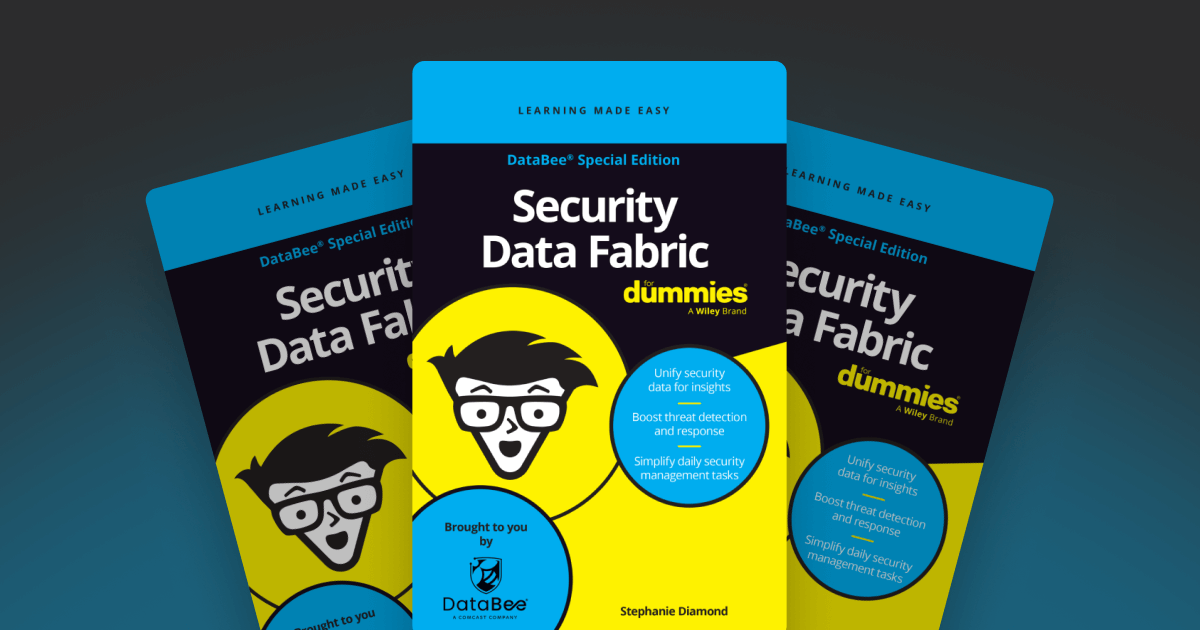What to Look for in a Security Data Fabric Solution: Key Features & Questions
Free the CISO, a podcast series that attempts to free CISOs from their shackles so they can focus on securing their organization, is produced by CIO.com in partnership with DataBee®, from Comcast Technology Solutions.
In each episode, Robin Das, Executive Director at Comcast under the DataBee team, explores the CISO’s role through the position’s relationship with other security stakeholders, from regulators and the Board of Directors to internal personnel and outside vendors.
What to Look for in a Security Data Fabric Solution
As organizations face growing complexity in their cybersecurity environments, choosing the right security data fabric is more critical than ever. With dozens—sometimes hundreds—of tools generating siloed data, a security data fabric helps unify, enrich, and operationalize that data to help improve visibility, threat detection, and compliance.
But not all solutions are created equal. Here are the key components to look for—and the questions to ask your vendor—when evaluating a security data fabric.
Key Components of a Security Data Fabric
Broad Ingestion Capabilities
Your solution should support data from a wide range of tools—SIEMs, EDRs, firewalls, cloud platforms, and more. Look for flexible ingestion methods like APIs, log forwarders, and cloud storage integrations.
Support for Nontraditional Data Types
Beyond logs and alerts, the fabric should ingest business context, organizational hierarchy, and external threat intelligence to enrich your data and help improve detection accuracy.
Seamless Integration
It should integrate easily with your existing SIEMs, BI tools (e.g., Tableau, Power BI), and ticketing systems to streamline workflows and reduce operational overhead.
Automated Enrichment
Real-time enrichment ensures your data is always current and contextualized—without manual effort.
Out-of-the-Box Dashboards
Prebuilt, customizable dashboards for executives, SOC teams, and GRC roles accelerate time to value and improve usability across the organization.
Questions to Ask Your Potential Security Data Fabric Provider
How many data sources does your platform support? And can you add sources that I might need, quickly, easily?
Look for breadth and depth—ideally 300+ integrations.
Can you ingest data from cloud, on-prem, and SaaS environments?
Flexibility is key to full coverage.
Do you support enrichment with business context and external threat intelligence?
This is essential for prioritizing threats and understanding impact.
How do you ensure data quality and ingestion health?
Continuous, on-demand access to monitoring your data health helps maintain trust in your data.
What dashboards and reports come prebuilt? Can they be customized?
Stakeholder-specific views are critical for adoption and decision-making.
How does your solution integrate with our existing SIEM and ticketing systems?
Smooth integration reduces friction and improves efficiency.
Choosing the right security data fabric isn’t just about technology—it’s about enabling smart, fast, and more collaborative security operations. Ask the right questions, and you’ll find a solution that scales with your needs and delivers real value across your organization.
Want to dive deeper? Download Security Data Fabric For Dummies, DataBee®
What to Look for in a Security Data Fabric Solution
As organizations face growing complexity in their cybersecurity environments, choosing the right security data fabric is more critical than ever. With dozens—sometimes hundreds—of tools generating siloed data, a security data fabric helps unify, enrich, and operationalize that data to help improve visibility, threat detection, and compliance.
But not all solutions are created equal. Here are the key components to look for—and the questions to ask your vendor—when evaluating a security data fabric.
Key Components of a Security Data Fabric
Broad Ingestion Capabilities
Your solution should support data from a wide range of tools—SIEMs, EDRs, firewalls, cloud platforms, and more. Look for flexible ingestion methods like APIs, log forwarders, and cloud storage integrations.
Support for Nontraditional Data Types
Beyond logs and alerts, the fabric should ingest business context, organizational hierarchy, and external threat intelligence to enrich your data and help improve detection accuracy.
Seamless Integration
It should integrate easily with your existing SIEMs, BI tools (e.g., Tableau, Power BI), and ticketing systems to streamline workflows and reduce operational overhead.
Automated Enrichment
Real-time enrichment ensures your data is always current and contextualized—without manual effort.
Out-of-the-Box Dashboards
Prebuilt, customizable dashboards for executives, SOC teams, and GRC roles accelerate time to value and improve usability across the organization.
Questions to Ask Your Potential Security Data Fabric Provider
How many data sources does your platform support? And can you add sources that I might need, quickly, easily?
Look for breadth and depth—ideally 300+ integrations.
Can you ingest data from cloud, on-prem, and SaaS environments?
Flexibility is key to full coverage.
Do you support enrichment with business context and external threat intelligence?
This is essential for prioritizing threats and understanding impact.
How do you ensure data quality and ingestion health?
Continuous, on-demand access to monitoring your data health helps maintain trust in your data.
What dashboards and reports come prebuilt? Can they be customized?
Stakeholder-specific views are critical for adoption and decision-making.
How does your solution integrate with our existing SIEM and ticketing systems?
Smooth integration reduces friction and improves efficiency.
Choosing the right security data fabric isn’t just about technology—it’s about enabling smart, fast, and more collaborative security operations. Ask the right questions, and you’ll find a solution that scales with your needs and delivers real value across your organization.
Want to dive deeper? Download Security Data Fabric For Dummies, DataBee®









